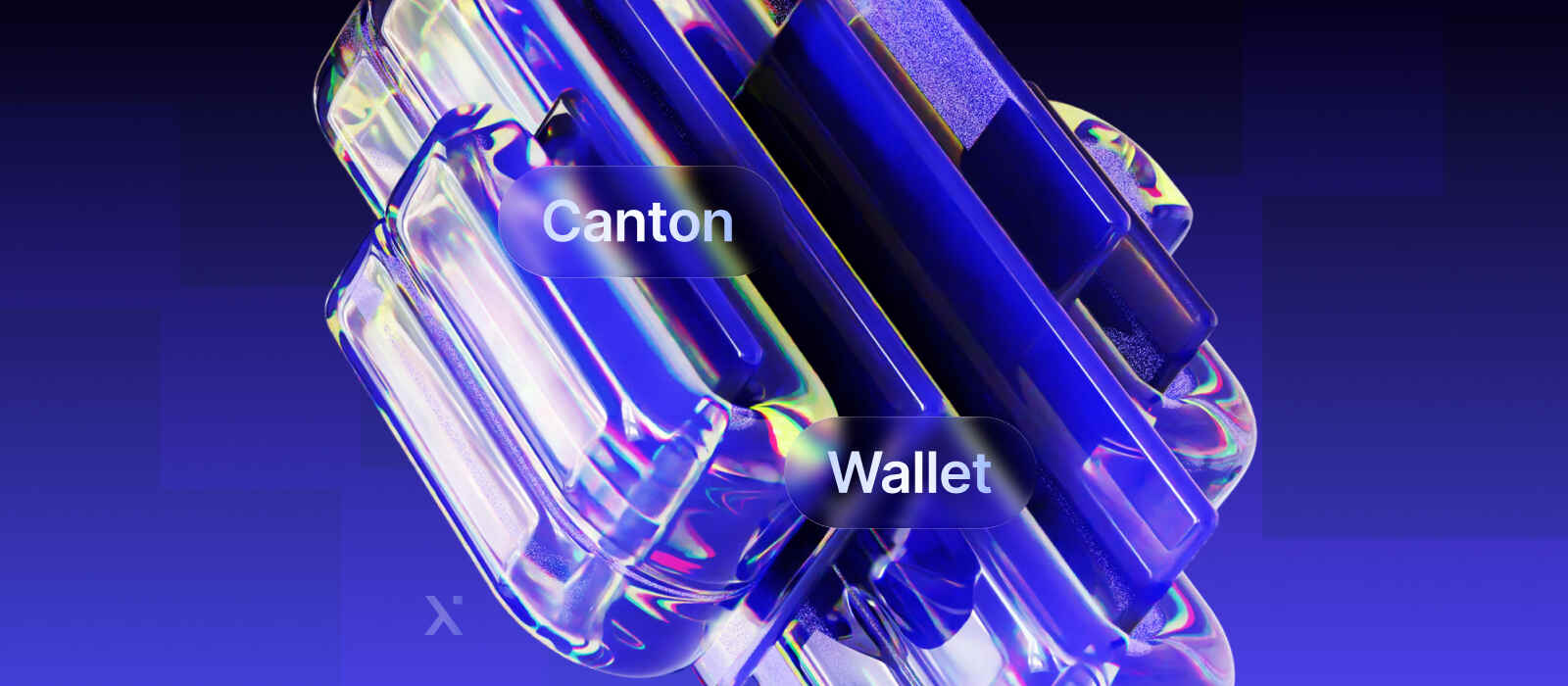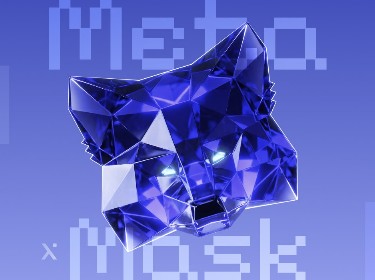The public blockchains out there feel a bit like the Wild West – not exactly a great match for the highly regulated, privacy-focused world of finance. This finance world needs a different kind of system, one built just for it. And that's pretty much what the Canton Network is.
For a long time, the world of enterprise blockchain has felt like an exclusive club that the big financial players couldn’t quite get into. They saw the potential, of course. Who wouldn’t be interested in more efficiency and transparency? But actually joining in… well, that was a different story. And it’s not like the technology is standing still, we’re talking about a market that’s expected to jump from over $32 billion in 2024 to more than $1431 billion by 2030.
Think of Canton less as a single blockchain and more as a “network of networks.” The whole point is to finally let financial institutions connect with each other securely, privately, and in a way where their systems can actually work together. This could help them tap into huge savings – some say up to $20 billion a year – on things like cross-border payments or settling securities. It’s almost like a G-20 summit for blockchains, a place where they can all communicate without having to broadcast every detail to the world.
Naturally, getting onto a network like this requires a key. For Canton, that key is its wallet. And this isn’t a small detail, especially when you see the digital wallet market itself is growing by more than 20% each year. Having a solid, safe, and easy-to-use wallet has gone from a nice-to-have to an absolute must. But you can’t just go with a standard crypto wallet development for this. Canton is built differently, so the wallet has to be, too. It needs a custom approach from the ground up.
And that’s where we can help. Our blockchain development team here at PixelPlex has spent a lot of time getting Canton.Network wallet development mastered. We’ve put together this guide to really get into the specifics of developing a wallet for the Canton Network. We’re going to look at the features you should be thinking about, and talk frankly about what a project like this costs. Let’s figure out how to build your wallet.
Why Canton.Network appeared
![]()
Alright, before we jump into building anything, let’s get a feel for the neighborhood. The Canton Network isn’t your average blockchain. It popped up in 2023, backed by some serious companies like Goldman Sachs, Microsoft, and BNP Paribas. What were they trying to do? They wanted to build a decentralized system that could actually keep up with the intense demands of the financial world.
You know how typical blockchains like Bitcoin or Ethereum have that privacy problem? Every single transaction gets blasted out for the whole network to see. If you’re a bank, that’s like being forced to announce every customer transfer with a megaphone in the town square. It’s a tough sell.
Canton gets around this with a pretty clever setup. Instead of one massive, public notebook that everyone shares, each company on the network gets its own private one. When they need to make a deal, their private notebooks can connect through a shared synchronization layer. Think of it like having a quiet chat in a packed room – only the people in on the deal can hear the details. This approach makes “atomic transactions” possible, which is a fancy way of saying that a complex, multi-part deal either happens completely or not at all. No messy in-betweens. And it does all this while keeping sensitive info private. To really see what’s possible here, you need to work with developers who really know their way around Canton.Network development.
The Opportunities of Banking in Metaverse
How to Build a Crypto Wallet: a Complete Guide
Code, Capital, and Compliance: A Deep Dive into Canton Network Smart Contract Development
Why Canton for a wallet? What about the others?
With big names like Ethereum and business-focused platforms like Hyperledger Fabric out there, you might be thinking, “Why go with the new kind?” It really comes down to the specific problems Canton was built to fix from day one.
![]()
Canton vs. public blockchains (like Ethereum)
Picture trying to negotiate a confidential, multi-billion dollar merger right in the middle of Times Square. That’s more or less what it feels like to use a public blockchain for institutional finance. Even if the data is anonymous-ish, it’s still out there for everyone to see. For any regulated industry, where secrecy is everything, that’s an absolute non-starter.
Canton flips that whole model on its head. First off, it’s truly private. Information is only shared with the people who absolutely need to see it for a transaction. Nobody else gets a peek. It’s a world away from the “broadcast everything” method of public chains. On top of that, it’s a members-only club. You can’t just wander in and start validating things. Everyone on the network is a known, approved player, which creates the kind of trusted environment that’s crucial for financial operations.
| Feature | Canton | Other blockchains (e.g., Ethereum) |
| Target market | Regulated institutional finance | General purpose (DeFi, NFTs, etc.) |
| Privacy | Built-in. Data is only visible to parties with a “need to know.” | Public. All transaction data is visible to everyone. |
| Scalability | Horizontal. Scales by adding independent sub-networks. | Monolithic. All transactions on a single global chain. |
| Interoperability | Atomic cross-chain transactions. Multi-chain actions either succeed or fail as a whole. | Limited/risky. Often uses bridges that don’t guarantee atomic settlement. |
| Architecture | “Network of networks”. Independent but interconnected. | Single, global ledger. All nodes store the same data. |
Canton vs. other private blockchains (like Hyperledger Fabric or Corda)
Now this is where things get really interesting. Other private chains have the privacy and permissioned parts down, so what’s Canton’s secret weapon? Interoperability.
Imagine other private blockchains are like building a super secure intranet for your company. It works great for your internal stuff, but you’re basically on an island. If you want to connect and do business with another company’s intranet, you have to build these complex, expensive, and often clunky bridges. Each one is a huge, one-off project.
Canton, on the other hand, was built to be the bridge from the very beginning. It’s a “network of networks.” It lets different apps, built by different companies on their own private ledgers, just connect and work together. This means a bank using a Canton app for tokenizing assets can work directly with an insurance company using a different Canton app for managing policies. No custom builds, no revealing private data. It just works.
And that combination – real privacy plus built-in connectivity – is precisely why building a wallet for Canton is such a big deal for enterprise projects. You’re not just making a key for one locked door. You’re building a passport to an entire, interconnected ecosystem of institutional finance.
Daml as key infrastructure builder
The magic behind Canton’s privacy and interoperability is Canton.Network smart contract development services by a language called Daml. If you’re used to languages like Solidity (the language of Ethereum), Daml might feel like a breath of fresh air. It’s designed to be more intuitive and business-friendly, focusing on workflows and permissions rather than low-level blockchain mechanics.
Here’s what makes Daml special:
- Privacy by design: With Daml, you explicitly define who can see what data and who can perform what actions. This granular control over privacy is baked into the language itself, not just an afterthought.
- Focus on business logic: Daml is all about modeling real-world business processes. You spend less time worrying about the intricacies of the blockchain and more time defining the rules of your agreements.
- Interoperability: Daml is blockchain-agnostic, meaning it can run on different distributed ledgers. This is a key part of Canton’s “network of networks” vision.
| Feature | Daml | Other languages (e.g., Solidity) |
| Focus | Business Logic. Abstracted from blockchain details. | Low-level implementation. Handles blockchain specifics like gas and memory. |
| Privacy | Built-in “Need-to-know.” Enforced by the language itself. | Public by default. Requires complex workarounds for privacy. |
| Safety | High. Designed for correctness and prevents common errors. | Lower. Vulnerable to common hacks; requires extensive manual auditing. |
| Portability | “Write once, run anywhere.” Deployable on multiple ledgers. | Platform-specific. Tied to a single blockchain (e.g., Ethereum). |
Why does this all matter for your wallet? Because a Canton wallet isn’t just a simple tool for sending and receiving tokens. It’s an interface for interacting with complex, multi-party business workflows. It needs to understand Daml’s permissioning model, handle private data securely, and provide a user-friendly way to navigate the Canton ecosystem. This is a far cry from your standard crypto wallet, and it’s why a specialized approach to Canton.Network wallet development is so important. In fact, building such a wallet often involves MPC wallet development, which uses cryptographic techniques to securely distribute key material across participants. It aligns perfectly with Canton’s need for privacy and multi-party integrity.
As the world of finance becomes increasingly tokenized, having the right tools to manage these new assets will be crucial. For those interested in the broader applications of this technology, a deeper dive into Daml development can provide even more insight.
Crypto Payment Gateway: Costs, Benefits, Implementation
How Permissioned Blockchains Transform Business
A Network of Networks: How Canton Is Redesigning Financial Infrastructure
Canton.Network wallet development: the start
Building a Canton wallet is a bit like building a custom car. You can’t just grab parts off the shelf and expect them to fit. You need to understand the unique engine (Canton), the fuel it runs on (Daml), and the driver’s needs (your users).
![]()
Here’s a look at the key components and features you’ll need to consider for your Canton.Network wallet development project.
What a Canton wallet really needs to do
Securely handling your keys
This is priority number one, after all. Your Canton wallet is responsible for creating and protecting private keys. It could store them right on your device (which is called non-custodial), or you could let a service you trust manage them for you (that’s custodial).
Managing your identity on the network
In Canton, your on-chain identity is called a “Party.” Think of it as your secure, crypto-verified user account. So naturally, the wallet needs to handle these Parties, letting you create new ones and use them to get things done on the network.
Signing transactions the Daml way
Here’s the thing: making a transaction in Canton isn’t as simple as just sending funds. You’re actually making a “choice” on a Daml contract. A good wallet has to understand what these choices mean and show them to you in plain English before you agree to sign anything.
Seeing your contracts and assets
Of course, you’ll want a clear view of all the Daml contracts you’re involved in and a list of the digital assets you own. The wallet should lay all of this out for you in a way that’s easy to follow.
Connecting to other systems
To be really useful for a business, a wallet will probably need to talk to other financial tools. This could involve everything from internal accounting software to a full-fledged crypto payment gateway development for handling client transactions.
Working across different networks
A huge advantage of Canton is how it connects different applications and networks together. The wallet, then, has to be built for this. It should make moving your assets and data between these different domains feel completely smooth. How to achieve this interoperability? Using advanced DAML smart contract development services.
Beyond the basics, you can incorporate features that set your wallet apart:
- Intelligent analytics: Imagine a wallet that doesn’t just store assets but provides insights. By leveraging AI development services, you could build features that analyze a user’s transaction patterns, suggest optimal workflow actions within Daml contracts, or provide predictive analytics for institutional portfolios.
- Multi-signature support: For institutional use cases, requiring multiple parties to approve a transaction is a critical security feature. This adds a layer of governance and reduces the risk of unauthorized actions.
The technical architecture
![]()
Like most modern applications, a Canton wallet has two main parts: a frontend (the part the user sees) and a backend (the part that does the heavy lifting).
The frontend
The frontend is all about user experience. It should be intuitive, easy to navigate, and hide the complexity of the underlying technology. Here are some things to keep in mind:
- Platform: Will your wallet be a mobile app (iOS, Android), a web app, or a browser extension? The choice will depend on your target audience and their needs.
- UI/UX design: A good user interface is crucial. The wallet should guide the user through complex actions like creating a Party or signing a Daml contract.
- Security: The frontend needs to be secure against common web and mobile vulnerabilities. This is where robust data security services become invaluable.
The backend
The backend is where your wallet communicates with the Canton Network. It will handle things like:
- Connecting to a participant node: A Participant Node is your gateway to the Canton Network. Your backend will need to connect to a Participant Node to submit transactions and query ledger data.
- Daml integration: The backend will use the Daml Ledger API to interact with the network. This API allows you to read ledger data, exercise choices on contracts, and manage Parties.
- Off-chain storage: While most data will live on the Canton ledger, you may need an off-chain database to store user-specific information like settings, contacts, or transaction history.
Building a robust and secure backend is a complex task. It requires a deep understanding of both Canton’s architecture and general backend development best practices. This is often where a specialized Canton.Network wallet development company can provide the most value. For businesses handling large amounts of data, integrating business intelligence solutions can also provide valuable insights into user behavior and network activity.
What’s the Canton.Network wallet development cost?
Now for the question that’s probably been on your mind since you started reading: how much is this all going to cost?
The honest answer is: it depends. The Canton.Network wallet development cost can vary widely depending on the complexity of your project, the features you need, and the team you hire.
Think of it like buying a car. You can get a basic sedan that will get you from A to B, or you can get a luxury sports car with all the bells and whistles. Both will get you where you need to go, but the price tags will be very different.
Let’s break down the main factors that will influence the cost of your Canton wallet.
Key cost drivers
![]()
- Features and complexity: A simple wallet with basic features will cost less than a complex one with advanced features like multi-party signing, atomic swaps, and integration with other systems. The more you want your wallet to do, the more it will cost to build.
- Platform: Developing for multiple platforms (iOS, Android, web) will cost more than developing for a single platform. Each platform has its own development quirks and requires a different skillset.
- Regulatory compliance: Financial applications are heavily regulated. Integrating features for AML (Anti-Money Laundering) and KYC (Know Your Customer) is often a legal necessity and a significant development task. This is where specialized crypto compliance solutions become critical.
- UI/UX design: A custom, polished UI/UX design will cost more than a basic, template-based design. However, a good user experience is often worth the investment, as it can significantly improve user adoption and satisfaction.
- Team and location: The cost of development will also depend on the team you hire. A team of experienced blockchain developers in a high-cost location will charge more than a team of junior developers in a low-cost location. However, when it comes to something as complex and security-critical as a wallet, experience is often worth paying for.
- Security and audits: Security is not a place to cut corners. A proper security audit by a reputable firm is an essential part of any wallet development project. This will add to the overall cost, but it’s a small price to pay for peace of mind. For those looking for a comprehensive approach, security audit and risk management services can provide a holistic view of your project’s security posture.
DAML Development Services: Everything You Need to Know
Canton.Network Explained: How It Solves DeFi's Biggest Risks
Getting an estimate
So, with all that in mind, what’s a realistic budget for Canton.Network wallet development?
| Project scope | Estimated cost | Key features |
| Basic MVP | $50,000 – $100,000 | A functional wallet for a single platform (web or mobile) with core features like sending, receiving, and viewing token balances. Focus is on a proof-of-concept and getting a product to market quickly for early users. |
| Full-Featured Wallet | $100,000 – $300,000+ | An advanced, multi-platform wallet (web, iOS, Android) with a custom UI/UX. Includes advanced features like multi-signature support, integration with other applications on the Canton Network, and enhanced security protocols. |
| Enterprise-Grade | $300,000+ | A highly customized solution for a regulated financial institution. This would include extensive security audits, KYC/AML compliance features, seamless integration with existing enterprise systems, and ongoing maintenance and support. |
Canton Loop
The Canton Network’s first self-custodial wallet
First non-custodial wallet on Canton
Generated $3M revenue in 2 months since launch
Ranked in Top 10 Canton Coin Validator Leaderboard
Explore the case studyThese are just rough estimates, of course. The final Canton.Network wallet development cost will depend on the specific requirements of your project. The best way to get an accurate estimate is to talk to a Canton.Network wallet development company and get a custom quote. For projects that require a broader scope, such as integrating with existing financial systems, considering comprehensive banking software development expertise can be beneficial.
Choosing a Canton.Network wallet development company
Building a Canton wallet is not a solo mission. You’ll need a team of experienced developers, designers, and project managers to help you navigate the complexities of the Canton ecosystem.
But with so many companies out there claiming to be blockchain experts, how do you choose the right one? Here are a few things to look for in a Canton.Network wallet development company:
Deep technical expertise
This is non-negotiable. Your development partner should have a deep understanding of the Canton Network, the Daml smart contract language, and the intricacies of blockchain wallet development. Don’t be afraid to ask them technical questions and grill them on their experience.
Proven track record
Look for a company with a portfolio of successful blockchain projects. Ask for case studies and client testimonials. A company that has been there and done that will be better equipped to handle the challenges of your project.
Focus on security
As we’ve already mentioned, security is paramount. Your chosen partner should have a strong focus on security throughout the entire development process. Ask them about their security practices, their experience with security audits, and how they stay up-to-date with the latest security threats. In an increasingly complex digital landscape, leveraging technologies like machine learning for fraud detection can provide an extra layer of security.
Transparent communication
A good development partner will communicate with you clearly and regularly. They should be able to explain complex technical concepts in a way that you can understand and keep you updated on the progress of your project.
Choosing the right development partner is one of the most important decisions you’ll make. Take your time, do your research, and choose a company that you can trust to bring your vision to life. For a deeper dive into the world of wallets, exploring the nuances of web3 wallet development can provide a broader perspective.
Conclusion: the future is Canton
The Canton Network is poised to really change things for the financial industry. It gives us a chance to build a financial system that’s just more efficient and open for everyone. And what’s the key to unlocking all of this? The wallets. They’re how people will actually use and connect with this new system.
![]()
Stepping into Canton.Network wallet development can feel overwhelming at first. There’s a steep learning curve, and honestly, the stakes are pretty high. That’s exactly why we put this guide together – to help break it all down and give you a clear starting point.
For us at PixelPlex, this is more than just another development project. Our team is genuinely fascinated by the possibilities that technologies like Canton open up. We’ve spent over a decade in this space, so we have the technical know-how and the experience to help you build a Canton wallet that’s not only secure and easy to use, but also built to last.
So, if you’re thinking about moving forward with your Canton.Network wallet, we should talk. Our team is always here to answer questions, kick around some ideas, and help you figure out how to bring your concept to life. Decentralized finance is being built right now, and with the right tools, you can be a part of it.
Drop us a message here.
FAQ
Canton Network uses a unique, privacy-focused architecture and the Daml smart contract language, which are fundamentally different from public blockchains. You need a purpose-built wallet to securely interact with Canton’s specific features and contracts.
Absolutely! A Canton wallet can be designed as either non-custodial (where the user holds their own keys) or custodial (where a third party manages them), depending on your business model and security requirements.
A basic Minimum Viable Product (MVP) can often be developed in 3-4 months. More complex wallets with advanced features and multi-platform support will naturally require a longer timeline.
Yes, integrating compliance tools is crucial for financial applications. You can build in features like a Know-Your-Transaction solution to meet regulatory requirements from day one.
The primary cost driver is feature complexity. A wallet with advanced multi-party signing and cross-domain interoperability will cost more to build than one with only basic transaction functions.
Not necessarily. You can significantly speed up time-to-market and reduce costs by using a customizable white label crypto wallet development solution as a foundation for your project.
A specialized Canton.Network wallet development company brings deep expertise in Canton’s unique architecture and the Daml language, ensuring your project is secure and efficient. These skills are distinct from general DeFi development and are key to successful Canton.Network wallet development.




